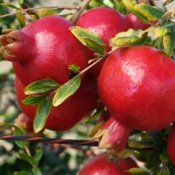
Growing PomegranatesPomegranate plants (Punica granatum) are diverse in their growth habits. They can range from small shrubs to trees reaching 20-30 feet tall. Native to northern India and the Middle East, these fruiting plants are naturally adapted to growing in regions where winters are cool and summers are hot.
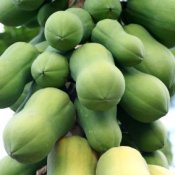
Growing PapayasPapaya plants are typically grown in the tropical and sub-tropical climates. In the United States, they are cold hardy to USDA Hardiness Zone 9, but they can also be grown as container plants indoors.

Growing Kiwi FruitsKiwi vines grow up to 28 feet long and produce brown, egg-sized fruits covered with a fuzzy skin. Inside the fruit is a soft, juicy green pulp and dozens of small, edible black seeds. Kiwi fruits are rich in vitamin C, E, and potassium.
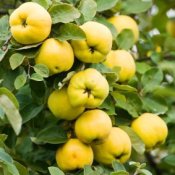
Growing QuinceQuinces (Cydonia oblonga) are fruit trees related to apples and pears. They require a chilling period to flower (100 to 140 days below 45ºF), and can be grown successfully in cooler tropical climates as well as colder temperate regions.
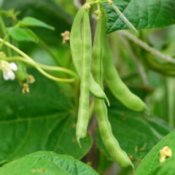
Growing Green BeansGreen beans are an easy garden crop to grow. They don't require shelling, because they are eaten pods and all. Commonly referred to as "snap beans" or "string beans", some cultivars may also be yellow in color, or have purple-colored pods.
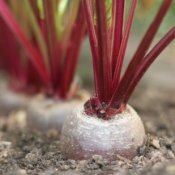
Growing BeetsGardeners love to grow beets because they mature quickly and they can be grown in almost any climate. They are rich in anti-oxidants, and although grown primarily for their sweet-tasting roots, they also produce a cap of delicious, edible greens.
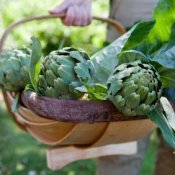
Growing ArtichokesArtichokes usually take more than 150 days to mature from seed and are highly sensitive to extremes of hot and cold-a narrow set of growing requirements that eliminates them from most gardens.
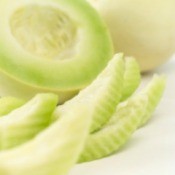
Growing Honeydew MelonsHoneydew melons may have a long growing season, but they are an interesting crop to grow. Although you may not see gigantic yields when the harvest finally does come in, the rewards of tasting your sweet, homegrown melons will be well worth your efforts.

Vegetables That Taste Better After FrostMost of us scramble get our vegetables harvested before the first frost. But did you know that the taste of some crops actually improves after being touched by frost?
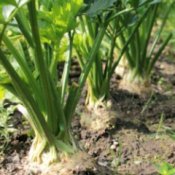
How to Grow CeleryCelery can be grown in just about any climate as long as you have the time and patience. Traditional trench-grown celery, which requires specific soil conditions and constant attention over a long growing season, has given this vegetable its demanding reputation.

Three Keys To Success With BlueberriesPlanting several blueberry bushes is a wonderful way to incorporate edible ornamentals into your landscape. The fruits are delicious to eat and contain a broad range of health benefits, and the plant's foliage provides a great source of fall color.
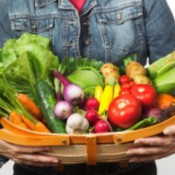
Community Supported Agriculture...Would you love to enjoy the benefits of a backyard vegetable garden but don't have enough time or space to grow your own food? If so, you may want to consider buying a share in a Community Supported Agriculture farm (CSA).
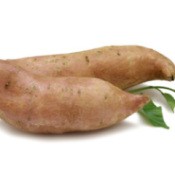
Growing Sweet PotatoesAlthough most often thought of as a food for the holidays, sweet potatoes are becoming more and more popular as a garden crop.
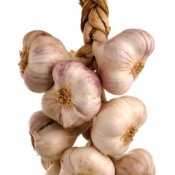
How to Make a Garlic BraidIf you use a lot of garlic for cooking, making garlic braids to hang in your kitchen is a fun and functional way to store your harvest. Braiding not only makes the bulbs look attractive, it also provides each bulb with good air circulation, which prolongs storage.
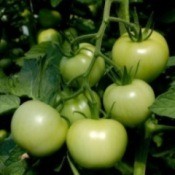
What To Do With Green TomatoesWaiting for a late-crop of tomatoes to go from green to red on the vine can seem like an eternity-especially in late August and early September, when fall is looming just around the corner.

Tips for Harvesting and Storing ApplesApples are one of the most popular, and when stored properly, economical fruits to grow at home. Unfortunately, they are also one of the hardest fruits to store in large quantities.
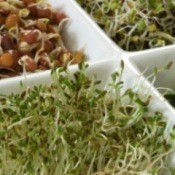
Grow Your Own Vegetable SproutsGrowing vegetable sprouts is fun, economical, and easy to do yourself. Not only are sprouts delicious, but they are also packed full of nutrients like protein, fiber, and vitamin C.
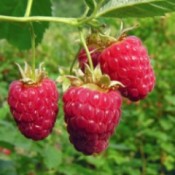
What You Need to Know to Start Growing RaspberriesThe key to getting the biggest berries and the biggest yield from each plant is understanding what they need, and how they produce. Here's what you need to know to start growing raspberries.

Avoiding Feast And Famine In The Vegetable GardenFeast or famine in the vegetable garden. Either everything is ready at once, or you're waiting for something to be ready. One day you're overwhelmed by a giant harvest, and the next day you're looking at empty rows. Sound familiar?
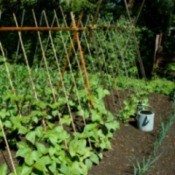
Comparing Bush Beans and Pole BeansGreen (Snap) beans are one of the most popular vegetables grown in the garden. Deciding if you should grow the bush or pole varieties depends on a number of factors. Both types have a lot to offer.
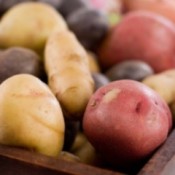
Picking A Potato VarietyCertain types of potatoes are best for baking. Others are best suited for boiling, making into French fries, chips, salads, or even casseroles. Ultimately, the variety you choose will have a major impact on the taste and quality of your potato dishes.
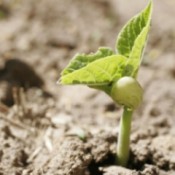
6 Vegetables That are Easy to Grow From SeedWhen you shop greenhouses in the spring, you may have noticed that some types of vegetables are rarely available as transplants; e.g. beets, peas, and carrots. That is because these types of vegetables grow best when sown directly into garden soil.

Selling Your Garden Products At The...If you produce more from your garden each year than your family and friends can consume, why not supplement your income by selling your excess wares at a local farmer's market? Here are the basics of what you need to know to get started.
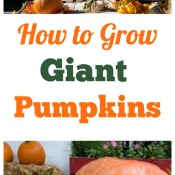
How To Grow Giant PumpkinsWhether your goal is to make a statement with your fall display or win first prize at a local pumpkin weigh-off, once you've mastered some pumpkin growing basics, growing the giants isn't really that hard.
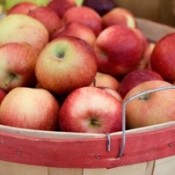
Fall Is Apple SeasonWhen I think of fall, my mind goes to new pencils and pumpkins and, of course, apples. If you are lucky enough to have an orchard near you, this is the time of year to go and get yourself a bushel of apples.
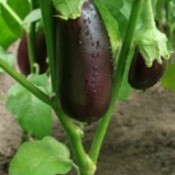
Tips For Growing EggplantsEggplants like to be pampered. These divas of the vegetable garden have a very low tolerance for stress, so unless your garden is in the perfect zone, growing them successfully is going to require a little bit more of your time and attention than usual.
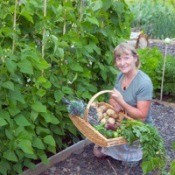
Hints For Harvesting Common Garden...Ideally, you want to pick your vegetable crops when they at the peak of freshness. For some crops this means keeping almost a daily vigil to ensure you catch them at their peak. Here are some hints for when to harvest some common garden vegetables.
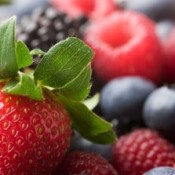
Saving Summer's BountySummer offers a plethora of berries and fruits that are both healthy and tasty. However, sometimes nature's bounty provides more than we can eat. Even at the best roadside stand bargain price, the produce costs too much if it's thrown away.
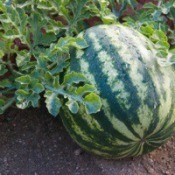
Picking The Perfectly Ripe MelonHarvesting a sweet juicy melon straight out of the garden is one of summer's purest delights. Figuring out when a melon is perfect for the picking, however, takes experience and a bit of luck.
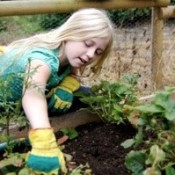
Preventative Medicine For Your Vegetable GardenThe expression "prevention is the best medicine" certainly applies to gardening, especially to vegetable gardening, where a few minor problems can quickly grow large enough to ruin your entire crop.
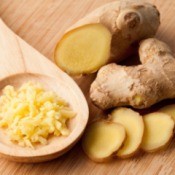
Growing GingerStart ginger from 1 to 1 1/2 inch long rhizomes (roots) that contain at least one eye. If you're using ginger roots from the grocery store or specialty store, look for firm, smooth roots with plenty of "eyes."
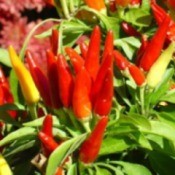
Turning Up The Heat: Growing Hot PeppersMany gardeners are developing a passion for hot peppers. With all of the exciting colors, shapes, tastes, and degrees of heat for every palate, it's easy to see why. Here are some helpful tips for selecting and growing hot peppers.
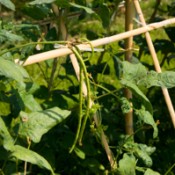
Drought Tolerant VegetablesThere is a growing movement among gardeners to be more water wise about what they plant. Here are some common edibles considered drought tolerant, and some tips that will help you conserve water when the weather turns dry.
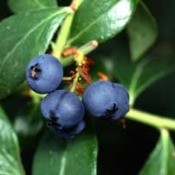
Growing BlueberriesBlueberries should be taste-tested before harvesting. Berries that have just turned blue are not the best tasting. Gently shake a cluster of berries to determine ripeness. The ripe ones will fall easily off the bush.
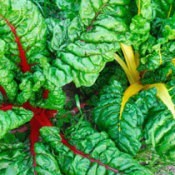
Growing Vegetables in the ShadeA site receiving full sun is premium real estate in the vegetable garden. If sunny spots are in short supply in your garden, an easy way to free up space, expand your garden (and your yields) is to use the shady spots in your garden to your advantage.
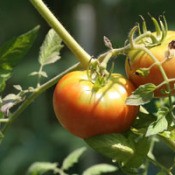
Growing TomatoesTomatoes are members of the nightshade family. Originally from South and Central America, today the tomato is grown worldwide for its brightly colored, edible fruits. Red tomatoes contain the pigment lycopene, a well-known antioxidant thought to help prevent some cancers.
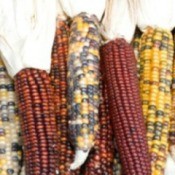
Growing and Harvesting Indian CornMany gardeners are surprised to learn that there's no special secret to growing Indian corn. If you can successfully grow sweet corn in your garden, then you can grow Indian corn, too.

Growing: SteviaStevia (Stevia rebaudiana "Bertoni") is an all natural sweetener that you can grow in your garden. Native to South America (Paraguay), stevia has zero calories, zero carbohydrates and a zero glycemic index.

Drying and Storing HerbsMost herbs dry easily, and if properly preserved, will retain their flavor and aroma long enough to carry you into the next growing season. As with a lot of gardening, timing is everything.
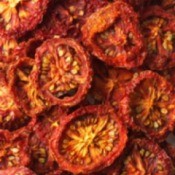
How to Make Your Own Sun Dried TomatoesSun dried tomatoes are one of the most useful gourmet ingredients for cooking. They are also expensive. If you grow or pick your own (or even if you buy them) sun drying them yourself is easy to do at home.
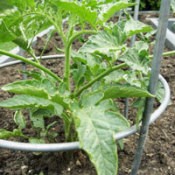
Supporting and Training Your Tomato PlantsFor many gardeners, tomatoes are one of the most prized vegetables in the garden. Whether you grow them in pots on your patio, or directly in your garden, staking them and training them to grow on supports will help reduce the potential of fruit loss due to sunburn, insects, and disease.
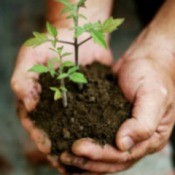
What's a Victory Garden?During WWII, Britain and the United States pushed their citizens to plant "victory gardens." These gardens were marketed to help the war effort by reducing the demand for food on the country (people grew their own instead of purchasing it), thus reducing the cost of food for the troops.

Plant A Row For The HungryIn 1995, the Garden Writers Association started a public service campaign called Plant a Row for the Hungry. The program's goal was to help stamp out hunger. Here is how you can be a gardener who are helps to feed the hungry each year by giving away a row of what you grow.
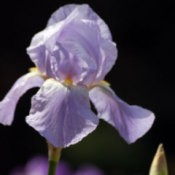
How to Grow Bearded IrisesThere is no shortage of reasons to fall in love with Bearded Irises. They come in hundreds of stunning colors and color combinations, they grow happily in all but the hottest and coldest zones, they have a tendency to fill out their corner of the flower garden rapidly.

First Time Gardener GuideWith all the emphasis on getting more vegetables in our diets, maybe you are thinking that this just might be the year that you decide to put in your first garden.
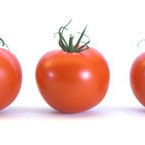
Tomato Growing SecretsTomato growing secrets submitted from the ThriftyFun community.
The number 1 secret for growing great tomatoes is water control. A tomato is 90% water. It needs a constant supply of water measured out on a consistent basis.
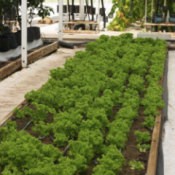
The Joy of HydroponicsThe exact definition of "hydroponics" is a little tricky. While the Greek words "hydro" and "ponics" means "water" and "labor," respectively, the art of hydroponics has to do with soil-less gardening; but not necessarily in water.
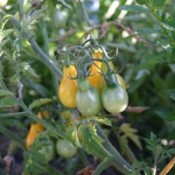
Trouble Shooting Tomato ProblemsOne of the greatest joys of the gardening season is harvesting plump juicy tomatoes. If your harvest is less than you hoped for this year, here is a page to diagnosing and treating some common tomato troubles.
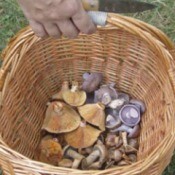
Grow Your Own MushroomsStudies have shown that when Shiitake, Oyster, and Enoki mushrooms are eaten as part of our regular diets, they can lower cholesterol, moderate blood sugar levels, reduce stress and enhance our immune systems.
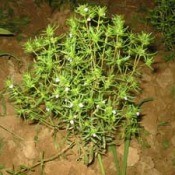
Growing Summer SavorySummer savory is native to the Mediterranean. In Ancient Rome, it was thought to be a powerful aphrodisiac. In the 1500s, Shakespeare wrote about it in A Winter's Tale.
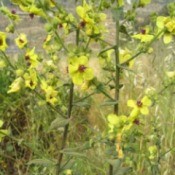
Growing: Verbascum (Herbs)Mulleins can grow to height of 3 to 6 feet and are somewhat deer resistant. Widely distributed throughout the United States, wild species of Common Mullein are considered an ecological threat and a highly invasive species.
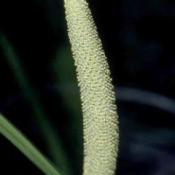
Growing: Sweet FlagSweet Flag is an unusual herb in that its natural habitat is in shallow water. Its sword-shaped leaves are similar to that of an Iris, except that when crushed, they release a distinctively pleasant scent, its tiny, greenish-yellow flowers are inconspicuous, appearing on tall, cylindrical spikes.

Growing: Yarrow (Herbs)A common roadside plant found throughout North America, Yarrow is valued for its medicinal properties and for its use in cosmetics. Its colorful flat flower heads are 2 to 6 inches across and come in a variety of colors perfect for dried and cut flower arrangements.
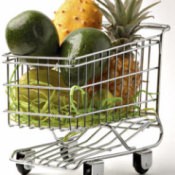
Grocery Store GardeningI'm often asked if the fruits and vegetables purchased from a grocery store can be planted to produce more food. The answer is, yes! And not only can you plant fruits and vegetables, but nuts and spices, too.
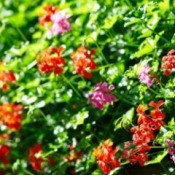
Growing Scented GeraniumScented geraniums are hybrid cousins of the common garden geranium. Most plants grow to a height of around 1 to 2 feet, but vary greatly in scent, foliage, flower color and even growing habits, depending on their variety.

Growing SageSage is actually classified as a dwarf, semi-evergreen sub-shrub, but most gardeners think of it as a classic herb that forms tidy mounds of aromatic foliage. Most cultivars grow 18-24 inches high.
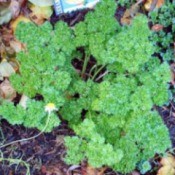
Growing: ParsleyParsley is a widely used culinary herb and a familiar sight in most supermarket produce sections. The crisp, compact leaves of Curly Parsley make striking edgings in the flowerbed and attractive garnishes.
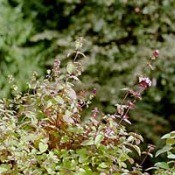
Growing: OreganoOregano is one of the most valuable culinary herbs to grow in the garden. Unlike its relative, Sweet Marjoram, Oregano is a hardy perennial that will over winter in most zones if protected.
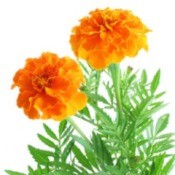
Growing: Pot MarigoldThe Pot Marigold is an easy-to-grow, low maintenance addition to any herb garden. Its yellow or orange edible flowers and dark green foliage add a cheerful splash of color from mid summer until past the first frosts of fall.
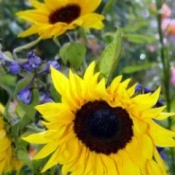
Growing and Harvesting SunflowersSunflowers are perhaps the most cheerful and endearing native flower in the United States. For centuries, Native American tribes have harvested these versatile flowers.
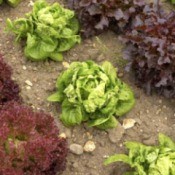
There's Still Time For Second Season...Late summer and early fall is the perfect time to squeeze a second season of vegetables out of your garden. For crops like corn, the warm days and cool nights of fall concentrate their sugars, which acts to enhance their flavor.

Growing PotatoesGrowing guide for potatoes. The potato is a perennial plant from the nightshade family, grown for its starchy tuber.

Troubleshooting Your Vegetable GardenThis page helps you troubleshoot problems with your vegetables. If you grow edibles long enough, you're bound to run into some problems. Many these problems can be avoided (or at least overcome) with proper cultivation techniques.
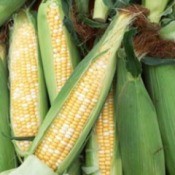
Sweet On CornSummer just wouldn't be the same without eating juicy, sweet, corn-on-the-cob. Selecting and growing a corn variety that gives you the sweet flavor you're looking for can be a bit confusing unless you're able to sort through some names and abbreviations.
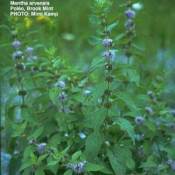
Growing: MintA guide to growing mint. Except for pennyroyal, mint grows on upright stems to a height of 1-2 feet high, has aromatic leaves and sends up spikes of small, pink to purple flowers that bloom in the late summer.

Growing MarjoramA guide to growing marjoram. Depending on the climate, marjoram can be grown as an annual, or a tender perennial. Native to Portugal, it grows only inches tall on sturdy upright stems with clusters of dainty flowers that are pink, purple or white in color and is grown mainly for its many wonderful culinary properties.
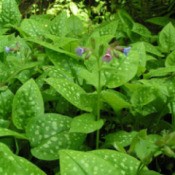
Growing: LungwortLungwort is one of the most interesting herbs to grow for color. After clusters of pinkish-red flowers open in the spring, they slowly change in color to violet or blue to create a lovely, multi-colored effect. When the flowers fade away, we are left with its blotchy, white and green foliage, which remains interesting and attractive for the rest of the season.
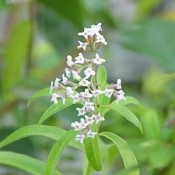
Growing Lemon VerbenaA guide for growing Lemon Verbena. The small lavender-colored flower clusters along the woody stems of lemon verbena are not particularly showy, but the herb is worth growing just for its foliage.
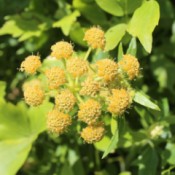
Growing: LovageA guide to growing lovage. Every part of lovage, with the exception of the small, umbel-shaped yellow flowers, can be harvested and utilized in medicinal, culinary or cosmetic ways.
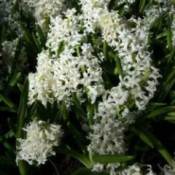
Growing Summer HyacinthAccording to Greek mythology a young boy named Hyacinth was killed with a discus while playing a game. A hyacinth sprang from his wound as he lay in the arms of the god Apollo, who was wailing in grief.
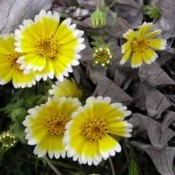
Growing Tidy Tips (Layia Platyglossa)Tidy Tips are a wildflower native to California. They are more often grown in the gardens of England than in the United States.
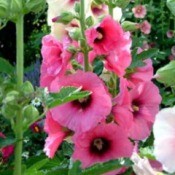
Growing HollyhockThe hollyhock is a relative to the hibiscus. Children adore making dolls out of hollyhocks. Use a flower for the skirt. Use a bud to top the skirt with a head (attach with a toothpick) and put another flower on the head to serve as a bonnet.
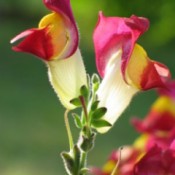
Growing SnapdragonGrowing guide for snapdragons. Purchase seedlings or start seeds indoors 8 to 10 weeks before you last spring frost. Seeds need light to germinated so don't cover them with soil.

Growing: CarawayCaraway are grown not so much for their medicinal herbal properties as they are for their culinary uses in flavoring in dishes, candies and liqueurs. It has bright green leaves similar to a carrot top and 18 to 30 inch stems that appear rather weedy looking.
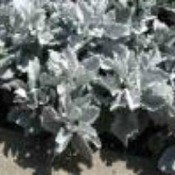
Growing Dusty MillerNative to southern Europe, Dusty Miller is grown primarily for its attractive silver-gray foliage and most gardeners prefer to cut off the flowers to encourage leaf growth.
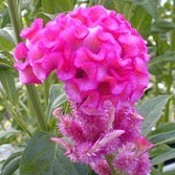
Growing Celosia (Cockscomb)Celosia thrives in heat and humidity. Sow seeds directly outdoors in warmer zones. In cooler zones start seeds indoors 6 to 8 weeks before last frost.
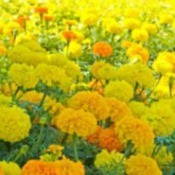
Growing MarigoldsGuide for growing growing Marigolds. Marigolds possess natural compounds useful for repelling nematodes in the garden, especially African varieties. Several varieties are also widely used for their culinary and herbal properties (mostly for tea) in many Latin American countries.
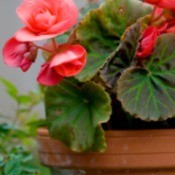
Growing Wax BegoniaGuide for growing wax begonia. Starting annual begonias from seed can be difficult. You're better off buying them unless you need several dozen.
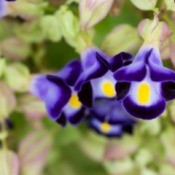
Growing Torenia (Bluewings, Wishbone Flower)Guide for growing Torenia (Bluewings, Wishbone Flower). Seeds are tiny, slow growing and best started indoors 10 weeks before last frost date. Cover seeds lightly with soil.
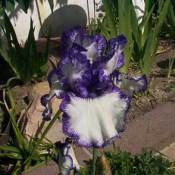
Growing Bearded IrisBearded Irises are especially susceptible to borers. Symptoms include smelly, rotting rhizomes and larvae snacking on leaves. Giving plants full sun in a well-drained location and making sure irises are planted so rhizomes are on or above the soil surface will help prevent attacks.
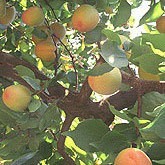
Growing ApricotsWhen selecting trees, look for trees that are least 1 year in age. Trees are self-fertile (they do not need other trees nearby to cross pollinate with in order to produce fruit).
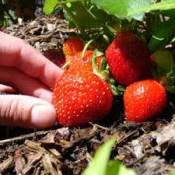
Growing StrawberriesStrawberries will grow in the majority of zones (3-10) and can delight growers with a crop of berries in as little as three months after being planted. Junebearing strawberries produce a single crop in late spring and depending on your zone...

Growing PeachesPeaches are hardy to zones 5-9. There are several varieties suitable for backyard landscapes, all of which need some period of cold weather before heading into the growing season.

Growing BlackberriesBlackberries grow well in zones 4 to 9. Choose hardy, virus-free plants cultivated to your specific growing zone. Because varieties have different growth habits (upright or trailing), plan ahead to create a training and support system to match the variety you select.
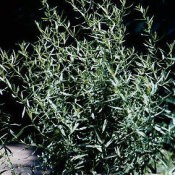
Growing ThymeThyme is a highly aromatic herb that makes an attractive edging or perennial border and a culinary staple for any herb garden. Native to the Mediterranean, thyme grows best in the cooler zones, where it is less prone to insect diseases than it is when grown in the south.
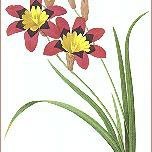
Growing Harlequin FlowerHarlequin flowers prefer a southern exposure. These plants are not drought tolerant, so keep soil moist until foliage dies back after flowering and the bulbs go dormant.
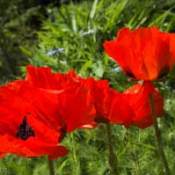
Growing Oriental PoppyTo be certain you get the color you prefer, unlike other poppies, it's best to buy Oriental poppies from nurseries. Plants will spread some, but prefer not to be disturbed.
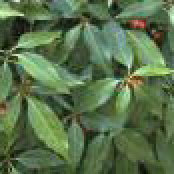
Growing Japanese AucubaThe Japanese Acuba is very pollution and drought tolerant making it a good choice for seaside landscaping. Fertilizing in spring will encourage berry production.
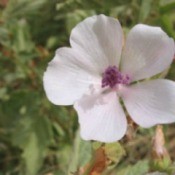
Growing English MallowWith the right conditions, mallow can grow to 3 or 4 feet high. Native to the marshes and damp meadows of England and Denmark, this lovely perennial herb has been used for its culinary and medicinal properties since ancient times.
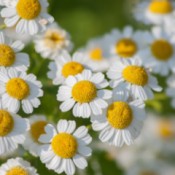
Growing: FeverfewFeverfew is a lovely perennial herb that has white, daisy-like flowers with yellow centers and soft, light green serrated leaves. Plants grow from 9 to 24 inches high and produce single or double flowers for most of the summer and early fall. Feverfew is useful for planting between stones or pavers on walkways and paths.
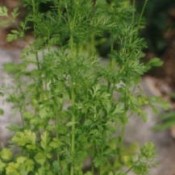
Growing CorianderCoriander plants are one of the most widely used herbs in the kitchen. Grown almost entirely for their culinary properties, the leaves (also known as cilantro) are used in a variety of ethnic dishes (especially Mexican)...
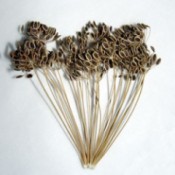
Growing: DillDill is an easy-to-grow, aromatic herb and a good choice for those just starting to explore the rewards of growing their own herbs. Dill grows up to 3 feet tall and is an attractive addition to the garden's back border with its clusters of star-shaped yellow-green flowers and its airy, feather-like blue-green foliage.

Growing: HopsHops have stout roots and tough, fibrous vines covered with dark green, heart-shaped lobed leaves. The female plants produce the compact, cone-like catkins called strobiles, which are harvested for beer making.
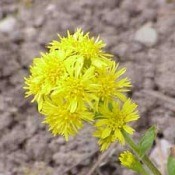
Growing: GoldenrodGoldenrod is native to Great Britain. It reaches a height of about 2 1/2 feet and has a creeping, somewhat invasive growing habit. In appearance, goldenrods have bright green, pointed leaves at the base of their stems, and smaller, more oval-shaped leaves toward the tops of their stems.
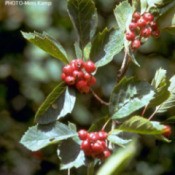
Growing: HawthornHawthorns are trees native to Europe, North Africa, the Mediterranean and Western Asia. They now grow widely in parts of the United States as well. The tree has long been considered sacred in parts of the Middle East, probably from a tradition that suggests it furnished the Crown of Thorns worn by Jesus during the Crucifixion.

Growing HorseradishHorseradishes are perennial herbs with large, fleshy roots and course, rough-textured leaves. They are cultivated for their pungent, aromatic roots, which are used primarily as a food condiment.
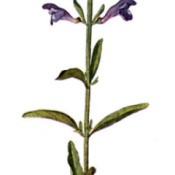
Growing: HyssopHyssop is a low-growing, evergreen shrub that has foliage and flowers similar to lavender in appearance. Hyssop grows to a height of about 24 inches, and its green leaves, spiked upright stems and delicate whorls of flowers (white, pink or lavender in color) give off a strong, slightly musky scent.

Growing Lady's MantleLady's Mantle is one of the most popular ornamental plants grown by herb gardeners. Their small, fuzzy heads of star-shaped, yellow-green flowers and graceful pleated leaves make them appealing backdrops for arrangements and displays.
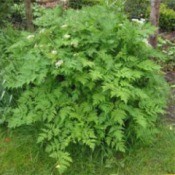
Growing ChervilIn appearance, chervil closely resembles Italian parsley. Plants have light green, fernlike leaves, grow to about 24 inches in height, and unlike Italian parsley, it tastes slightly like licorice.
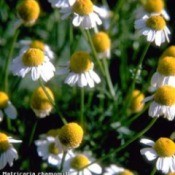
Growing ChamomileChamomile has dainty, daisy-like white flowers with yellow centers set on top of thin stems of feathery green leaves. It comes in creeping or trailing varieties, and seldom grows to more than 12 inches high.
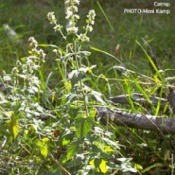
Growing Catnip (Catmint)This is the type of catnip that is most often used to fill those aromatic toys that cats go crazy for. It has soft, gray-green leaves that release a mint aroma when crushed, and mauve or white flowers on shoots 24 to 36 inches in height.
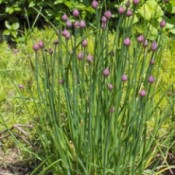
Growing ChivesThe common chive makes an attractive edging for a flower garden or border, as well as a versatile herb to have on hand in the kitchen. Its green, grass-like leaves grow 12 inches tall and end in a single pink or purple pom-pom like flower.